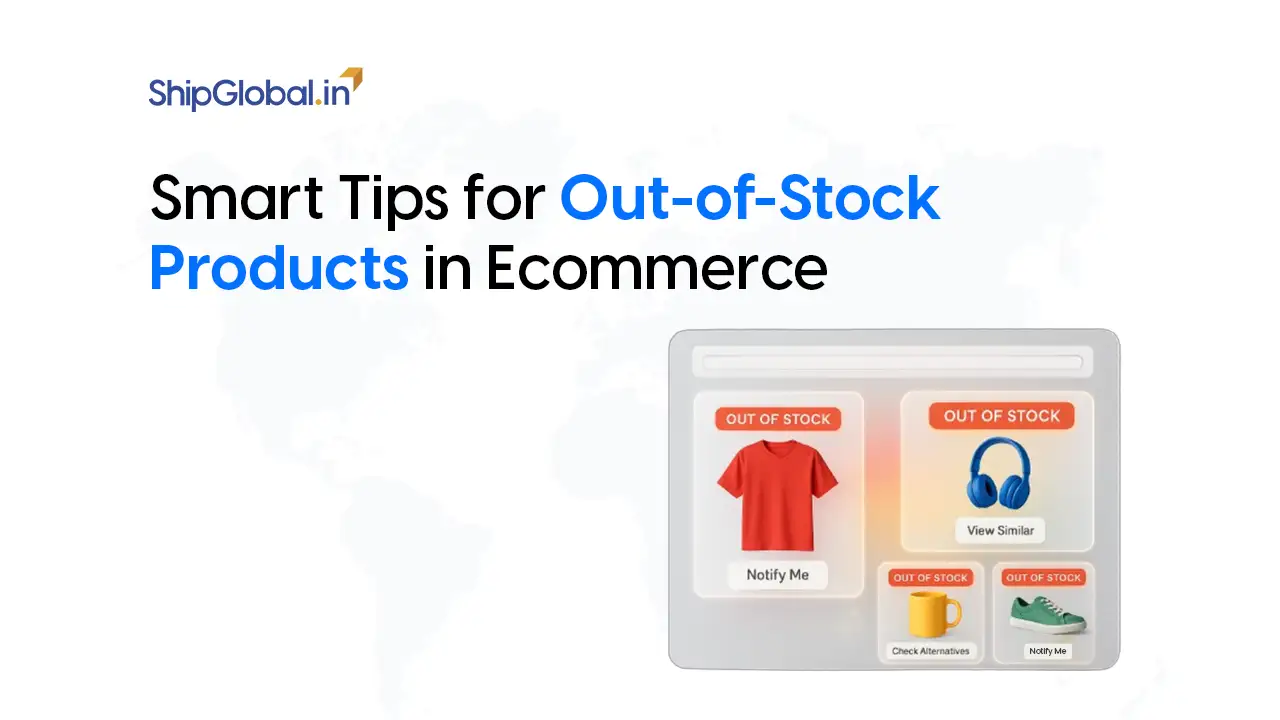If you’ve ever ordered something online and wondered how it gets to your doorstep so quickly, the answer lies in fulfillment centers. These facilities are the backbone of eCommerce fulfillment, ensuring products are stored, picked, packed, and shipped efficiently. Instead of businesses handling storage and shipping, they rely on third party logistics (3PL) providers to handle the entire process. That means faster deliveries, fewer headaches, and happier customers.
In today’s competitive online marketplace, speed and efficiency can make or break a business. Customers expect their orders to arrive as soon as possible, and businesses that fail to meet those expectations risk losing sales. This is why fulfillment centers have become essential for modern e-commerce businesses.
Understanding Fulfillment Centers
Think of a fulfillment center as a supercharged warehouse. While traditional warehouses just store products, fulfillment centers do much more—they manage order fulfillment, including warehousing and distribution, inventory management, picking and packing, and shipping and delivery. Essentially, they take care of everything from the moment an order is placed to the moment it arrives at your doorstep.
For online retailers, this means they don’t have to worry about logistics. Instead, they partner with a 3PL provider that handles the entire supply chain, ensuring customers get their orders on time. This allows businesses to scale efficiently without investing in expensive warehouse space or hiring a logistics team.
How Does a Fulfillment Center Work
Here’s what happens behind the scenes at a fulfillment center:
1. Receiving Inventory
Businesses send their products to the fulfillment center, where they are sorted, labeled, and stored. This step is crucial because accurate inventory management ensures products are available when customers place an order. Some fulfillment centers even offer services like quality control and repackaging to ensure products are in perfect condition before they reach customers.
The warehousing and distribution process begins here, as items are strategically stored based on demand forecasts. High-demand products are often kept closer to the packing stations for quick retrieval, while slower-moving products are placed in long-term storage areas.
2. Inventory Management
Ever wonder how online stores always seem to know what’s in stock? That’s thanks to advanced inventory management systems. These systems track stock levels in real time, preventing overselling and stock outs. Many fulfillment centers integrate their inventory tracking with e-commerce platforms like Shopify, Amazon, and eBay, so businesses always have up-to-date stock levels.
Sophisticated inventory management systems use AI-driven analytics to forecast demand, optimize storage space, and prevent overstocking or understocking issues. This ensures efficient supply chain operations and minimizes unnecessary costs for businesses.
3. Order Processing
The moment a customer places an order, the system kicks into action. The fulfillment center retrieves the order details and directs staff (or robots) to gather the necessary products. Order processing speed is crucial for customer satisfaction, and modern fulfillment centers use AI-driven software to optimize the picking process.
Automation plays a significant role in modern order processing. Barcode scanning, RFID tracking, and robotic picking systems help reduce errors and improve efficiency, ensuring that the right items are picked every time.
4. Picking and Packing
- Picking: Staff or automated systems locate the items in the warehouse.
- Packing: The items are packed securely for shipping and delivery.
To speed things up, many fulfillment centers use robotics and automation, ensuring orders are processed quickly and with minimal errors. Some even offer eco friendly packaging options to reduce waste and align with sustainable business practices.
Custom branding options are also available in some fulfillment centers, allowing businesses to add personalized packaging, thank-you notes, or branded inserts to enhance the customer experience.
5. Shipping and Delivery
Once packed, the order is handed over to a shipping carrier. Fulfillment centers work with multiple couriers to ensure cost-effective and fast deliveries. Depending on the customer’s choice, they may opt for standard, expedited, or even same-day shipping. Many fulfillment centers use smart routing technology to determine the fastest and most cost-effective way to deliver an order.
Some advanced fulfillment centers integrate with real-time carrier rate comparison tools to provide the most affordable shipping options. This helps businesses reduce costs while maintaining reliable shipping and delivery services.
Micro Fulfillment Centers: A Game-Changer in E-Commerce
With online shopping booming, businesses are looking for even faster ways to deliver orders. Enter micro fulfillment centers (MFCs)—small, automated fulfillment centers located closer to customers. These are particularly useful in urban areas, where same-day delivery has become the gold standard.
How Do Micro Fulfillment Centers Work
Unlike large fulfillment hubs, micro fulfillment centers are designed to process orders super quickly. They use automation and robotics for picking and packing, reducing human involvement and ensuring faster turnaround times. These centers are often found in urban areas, allowing businesses to offer same-day or next-day shipping. This is particularly useful for grocery delivery services, fashion retailers, and other industries where speed is crucial.
Benefits of Micro Fulfillment Centers
- Faster Deliveries – Because they’re closer to customers, MFCs significantly reduce shipping and delivery times.
- Lower Costs– Less distance traveled means lower last-mile delivery expenses.
- Smarter Inventory Management – Smaller storage facilities mean better optimization of stock levels.
- Happier Customers – Who doesn’t love getting their order within hours?
- Scalability – Businesses can expand by opening multiple MFCs in key locations.
For businesses wanting to compete with giants like Amazon, micro-fulfillment centers are becoming a must have strategy.
Choosing the Right Fulfillment Center
If you’re an online seller, choosing the right fulfillment center is crucial. Here’s what to look for:
- Location: The closer the facility is to your customers, the faster the deliveries.
- Technology: Advanced tracking and inventory management systems ensure efficiency.
- Shipping Options: A variety of shipping and delivery choices keep customers happy.
- Scalability: Can the center handle peak seasons?
- Customer Support: A reliable 3PL provider should be responsive and proactive.
- Integration with E-commerce Platforms: Make sure the fulfillment center seamlessly connects with your sales channels.
Fulfillment Center vs. Warehouse: What’s the Difference
Many people mistakenly assume that fulfillment centers and warehouses serve the same purpose, but they actually play very different roles in the supply chain. A warehouse is primarily a storage facility designed to hold large quantities of inventory for extended periods. Warehouses are often used by manufacturers, wholesalers, and retailers that need to store bulk goods before distributing them. These facilities typically focus on long-term storage rather than actively processing and shipping orders.
On the other hand, a fulfillment center is a dynamic operation focused on quickly moving products through the order fulfillment process. Unlike warehouses, fulfillment centers specialize in picking and packing, order processing, and shipping and delivery. They are equipped with advanced technology, such as AI-powered inventory management systems, automated sorting, and real-time tracking, to optimize efficiency. Additionally, fulfillment centers often partner with multiple shipping carriers, giving businesses a range of logistics options to ensure timely deliveries.
While warehouses are best suited for businesses that need long-term inventory storage, fulfillment centers are ideal for e-commerce companies and retailers that require fast, frequent shipping to customers. The main takeaway is that warehouses keep products stored, while fulfillment centers keep products moving efficiently through the supply chain to meet consumer demand.
Wrapping It Up
And with the rise of micro fulfillment centers, the future of warehousing and distribution is getting even faster. So, if you’re looking to scale your business without the hassle of logistics, finding the right fulfillment center might just be your best move!
By leveraging a fulfillment center, businesses can meet growing customer expectations, optimize order processing, and streamline their supply chain—all while staying ahead of the competition. As e-commerce continues to evolve, investing in the right fulfillment strategy will be key to long-term success.
At ShipGlobal Fulfillment, we pride ourselves on delivering reliable, scalable, and efficient solutions that empower businesses to grow without limits. With our customer-first approach and seamless logistics network, we ensure your products reach your customers faster, smarter, and stress-free.
FAQs
Any business that sells physical products online, including e-commerce retailers, subscription box services, and wholesalers, can benefit from a fulfillment center. These centers handle storage, packing, and shipping, allowing businesses to focus on growth.
Most fulfillment centers offer reverse logistics, which means they can process returns, inspect products, restock items, and handle refunds or exchanges on behalf of the business.
Yes! Many third-party logistics (3PL) providers offer flexible plans that cater to small businesses, allowing them to scale without managing storage and shipping themselves.
Most fulfillment centers connect with platforms like Shopify, Amazon, and WooCommerce, allowing real-time inventory tracking, automatic order processing, and seamless shipping updates.
A distribution center mainly moves products from manufacturers to retailers, whereas a fulfillment center directly ships products to customers.









